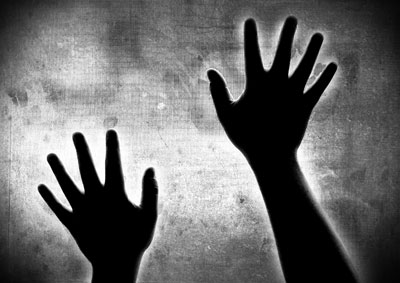All Nonfiction
- Bullying
- Books
- Academic
- Author Interviews
- Celebrity interviews
- College Articles
- College Essays
- Educator of the Year
- Heroes
- Interviews
- Memoir
- Personal Experience
- Sports
- Travel & Culture
All Opinions
- Bullying
- Current Events / Politics
- Discrimination
- Drugs / Alcohol / Smoking
- Entertainment / Celebrities
- Environment
- Love / Relationships
- Movies / Music / TV
- Pop Culture / Trends
- School / College
- Social Issues / Civics
- Spirituality / Religion
- Sports / Hobbies
All Hot Topics
- Bullying
- Community Service
- Environment
- Health
- Letters to the Editor
- Pride & Prejudice
- What Matters
- Back
Summer Guide
- Program Links
- Program Reviews
- Back
College Guide
- College Links
- College Reviews
- College Essays
- College Articles
- Back
Now You Take Bambi Stephen King Analysis
Princesses like Cinderella had young girls wishing for their fairytale ending and heroes like Hercules had young boys wishing for that strength and courage while movies like The Shining and Poltergeist make children quiver in fear under the blankets. Since the start of Disney, there have been families gathering together to enjoy the wholesome, happily ever after movies that entertain both children and adults, but few know the dark, petrifying origin stories hidden within the Disney classics. In the persuasive essay Now You Take Bambi or Snow White ~That’s Scary, author Stephen King effectively uses various types of rhetoric to question the material that children are exposed to in their early life and how this can desensitize them to the real horrors and deceit of the big, bad, world.
At the start of the essay, well established horror writer Stephen King takes his personal experience and expertise in the genre to determine whether the childrens stories force the audience enjoying the film or novel to grow up too fast and face the gore and adult themes drive the children entertainment industry, even if it is subtle. King’s essay begins with a retelling of a classic story, known by all, Hansel and Gretel. The story at first glance is understandably dark, but another look can show just how many taboo and difficult themes the tale presents children. According to King’s own analysis, “[Hansel and Gretel] with its grim and terrifying images of child abandonment, children lost in the woods and imprisoned by an evil woman, cannibalism, and justifiable homicide small children are routinely exposed to…”(King). This quote clearly demonstrates some of the many issues the fairy tale brings to the attention of young, impressionable children. Looking at other stories similar to one of Hansel and Gretel, there are even more ideas that are forced down children's throats from day one. This includes Tangled with its depiction of kidnapping and child imprisonment of Princess Rapunzel, Frozen with its casual representation of deceit and lying through the likes of Hans, and of course Cinderella with its classic rags to riches story focusing on Cinderella’s forced enslavement under her stepmother and sisters. The classics more often than not written by Hans Christian Anderson or the Brothers Grimm are laced with screaming horrors that are slightly muted for the Disney adaptations. While the original stories that inspired the classic Disney tales were much too dark for a young audience, the adapted versions still bring violence and merciless themes to the forefront of children’s mind’s.
King took his argument a step further by writing on the situation of a young boy, a mere three years old, experiencing night terrors after a late night viewing of Salem’s Lot. King’s use of logos while discussing the oddness of a child of such a young age watching a movie that was clearly intended for adults with a 9pm airing time makes his argument all more sensible. While such movies should be kept away from children, Stephen King begs the question of whether parental discretion is enough to prevent children from being exposed to too much too soon because in the case of the young boy, it was not enough to protect him from nightmares. King then takes his own experience as a father into account for a realistic way to encourage children to stay innocent as long as they can. In his own home, King uses the “high shelf” where all movies that are, in his own opinion, considered too mature for his young kids. Movies on this shelf include Carrie because of its portrayal of a teen turning against her friends and classmates after being embarrassed at a school dance and the Exorcist because of the themes that could possibly scare the children. In the case of scary movies not posing any particular events that would scar his children, King allows them to view the film with parental supervision. While King’s parenting tactics for these situations are in his own opinion, they work for his children and family.
With the knowledge that most every movie out there, whether it was made for children or not, can be harmful to the way children develop, Stephen King take his role as horror and thriller author and father into account while writing his persuasive essay, Now You Take “Bambi” or “Snow White” ~ That’s Scary. No matter the intended audience, parents should always take their right and responsibility to keep their children safe at the forefront of their minds when deciding the content they are okay with their children experiencing. And always remember, fairy tales are not always what they are cracked up to be.

Similar Articles
JOIN THE DISCUSSION
This article has 0 comments.
